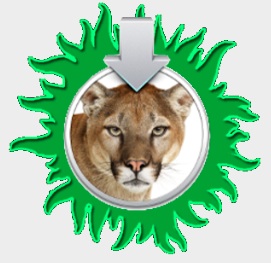Yes, thanks to the guys from MLPostFactor, it’s now possible to install OSX 10.8 Mountain Lion (even 10.8.4) on these older Intel-Macs: Early 2006 (and newer) versions of the iMac and Mac mini Late 2006 (and newer) versions of the Macbook, MacBook Pro, Mac Pro and Xserve Early 2008 (and newer) versions or the Macbook Air. OS X Mountain Lion can run on unsupported Intel Mac Pros While unsupported, if needed, Apple's earliest Mac Pros can be used to run Mountain Lion. Mac OS X Lion (version 10.7) is the eighth major release of Mac OS X (now named macOS), Apple's desktop and server operating system for Macintosh computers. A preview of Mac OS X 10.7 Lion was publicly shown at the 'Back to the Mac' Apple Special Event on October 20, 2010. It brought many developments made in Apple's iOS, such as an easily navigable display of installed applications, to the.
Hello raj.singh25Welcome to Apple Support Communities.
If I'm understanding correctly, several apps are not working because you need to update your macOS. I will be happy to help you with this. Your current version of macOS can be updated to macOS Sierra.
Take a look at the information below to ensure that you meet all of the other necessary system requirements to upgrade to macOS Sierra, from our article: How to get macOS Sierra
Can your Mac use Sierra?
macOS Sierra requires one of the following Mac models and versions of OS X. It also requires at least 2GB of memory and 8.8GB of storage space.
- iMac (Late 2009 or newer)
- MacBook (Late 2009 or newer)
- MacBook Pro (Mid 2010 or newer)
- MacBook Air (Late 2010 or newer)
- Mac mini (Mid 2010 or newer)
- Mac Pro (Mid 2010 or newer)
- OS X El Capitan v10.11
- OS X Yosemite v10.10
- OS X Mavericks v10.9
- OS X Mountain Lion v10.8
- OS X Lion v10.7
To find your model, memory, storage, and version of OS X, choose About This Mac from the Apple menu ().
Get Sierra from the App Store
Before upgrading, it's a good idea to back up your Mac. Then follow these steps:
- Open the App Store app on your Mac.
- Search the App Store for macOS Sierra, or go directly to the macOS Sierra page.
- Click the Download button on the macOS Sierra page. A file named Install macOS Sierra downloads to your Applications folder.
- After download is complete, Install macOS Sierra opens automatically. (You can also open it from the Applications folder, Launchpad, or Spotlight.) Click Continue and follow the onscreen instructions.
Cheers.

Jul 14, 2017 5:20 PM
UpdatesImportant Notes:
- Using APFS is REQUIRED in Mojave in order to receive system updates via the normal Software Update method. If you choose to continue using macOS Extended (Journaled) as your filesystem type, you will NOT receive System Updates via System Preferences. If you are not using APFS, you can follow the 10.14.1 installation steps below.
- After applying ANY system update via Software Update, re-applying post-install patches using your Mojave Patcher installer volume will most likely be necessary. If you install a software update and the system fails to boot afterwards, this is what needs to be done.
10.14.6
10.14.6 can be updated normally via Software Update if using an APFS volume, and will need to be patched using an installer volume created with Mojave Patcher version 1.3.2 or later after installing.
10.14.5
10.14.5 can be updated normally via Software Update if using an APFS volume, and will need to be patched using an installer volume created with Mojave Patcher version 1.3.1 or later after installing.
10.14.4
10.14.4 adds new changes that ARE NOT patchable by the post-install tool of Mojave Patcher v1.2.3 and older! Before updating to 10.14.4, you you will need to use the latest Mojave Patcher version to create a new installer volume, using the 10.14.4 installer app. Then, update to 10.14.4, either by installing via Software Update, or by just using the installer volume you've created to install.
10.14.3
If you are currently running 10.14.1 or 10.14.2, you can simply use the Software Update pane of System Preferences (if using APFS) to apply the 10.14.3 update. Once the update is installed, you will most likely need to re-apply post-install patches to get the system to boot again. This process is detailed in steps 8 - 10 above. If you are currently running 10.14.0, you'll need to proceed with the 10.14.1 update method described below.
10.14.2
If you are currently running 10.14.1, you can simply use the Software Update pane of System Preferences (if using APFS) to apply the 10.14.2 update. Once the update is installed, you will most likely need to re-apply post-install patches to get the system to boot again. This process is detailed in steps 8 - 10 above. If you are currently running 10.14.0, or are using a non-AFPS volume, you'll need to proceed with the 10.14.1 update method described below.
10.14.1/macOS Extended (Journaled) volumes
Install Catalina On Unsupported Mac

The Mojave 10.14.1 update does NOT install properly on unsupported machines, and could result in an unbootable OS. If you want to install the 10.14.1 update (and are not currently running 10.14.1), perform the following steps:
• Download the latest version of Mojave Patcher
• Download the installer using the Tools menu of Mojave Patcher
• Create a patched USB installer
• Boot from that, and install 10.14.1 onto the volume containing an older release.
• Once done, apply the post-install patches, and you should now be on 10.14.1.
Lion Unsupported Mac
